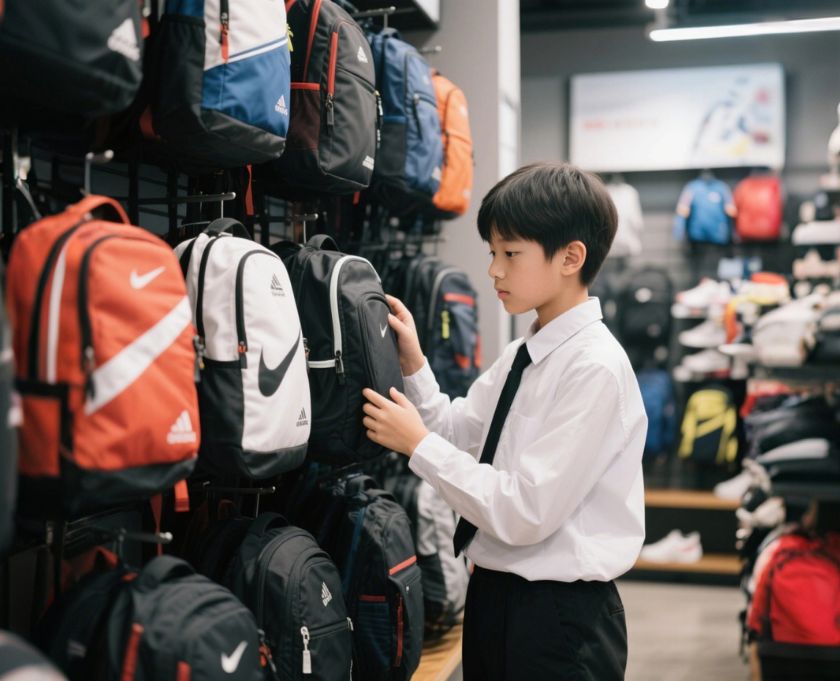Beautiful Plants For Your Interior

Choosing the right backpack for your child means more than just picking a pretty design—it’s about matching their age, growth needs, and daily routine. From kindergarteners carrying light supplies to college students lugging laptops, age matters.
This guide provides age-based recommendations on what matters most—size, comfort, organization, material, and safety—in 2025.
👶 1. Kindergarten (Ages 4–6): Tiny Tots, Tiny Loads
✔️ Key Considerations:
- Size: 10–12 L—compact and child-sized
- Weight: Under 500 g empty
- Straps: Wide, padded, adjustable
- Materials: Easy-clean polyester or nylon
⚡ Pro Tips:
- Fun prints encourage use
- One or two large compartments simplify packing
- Waterproof exterior guards against spills
My anecdote: When my niece started school, her 300 g waterproof bag with dinosaurs made her excited—and she never complained about shoulder strain.
🏫 2. Elementary School (Ages 6–10): Growing and Organized
✔️ Key Considerations:
- Size: 15–20 L—fits folders and snack
- Compartments: Front pocket + side water bottle sleeve
- Back support: Padded back panel
- Safety: Bright colors or reflective strips
⚡ Pro Tips:
- Use color-coded folders for subjects
- Name tags help at school
- Wipe weekly and air dry to prevent mildew
🎒 3. Middle School (Ages 10–14): Tech and Heavy Loads
✔️ Key Considerations:
- Size: 20–25 L—accommodate textbooks and tablet
- Laptop Sleeve: Padded compartment essential
- Chest or sternum strap: Reduces shoulder fatigue
- Durability: Cordura or ripstop nylon
⚡ Pro Tips:
- Check straps monthly—tighten any loose stitches
- Use a cable wrap to organize chargers and earbuds
- My son’s Under Armour bag with sternum strap reduced shoulder pain after football practice.
🎓 4. High School & College (Ages 14+): All-Rounder Needs
✔️ Key Considerations:
- Size: 25–35 L—enough for laptop, books, sport gear
- Ergonomics: Thick padding, contoured back support
- Organization: Multiple compartments, tech protection
- Style: Reflect personal style—versatile for campus
⚡ Pro Tips:
- Backpack capacity ≈ 10–15% of body weight
- Clean interior monthly—avoid dust buildup
- Consider anti-theft zippers or hidden pockets if commuting in urban areas
✅ 5. Ultimate Backpack Checklist
| Age Group | Capacity | Key Feature |
|---|---|---|
| 4–6 (Kindergarten) | 10–12 L | Lightweight, waterproof, fun design |
| 6–10 (Elementary) | 15–20 L | Organized compartments, padded back |
| 10–14 (Middle) | 20–25 L | Laptop sleeve, sternum strap, tough fabric |
| 14+ (High/College) | 25–35 L | Tech compartments, ergonomic padding, durable |
❓ FAQs About Age-Based Backpack Selection
Q1. Can a middle schooler use a laptop sleeve?
Absolutely—many schools provide tablets by grade 5 or 6.
Q2. When should I add a sternum strap?
Add one when textbooks and lunchboxes exceed 5 kg, usually around age 10–11.
Q3. Is waterproof really necessary?
Yes—kids spill drinks or walk in rain unexpectedly. A durable water-resistant outer layer goes a long way.
Q4. What’s a safe weight limit?
Keep total backpack weight ≤15% of body weight. For a 40 kg teen, limit is around 6 kg.
Q5. How often should I replace the bag?
Replace every 2–3 years or when fit becomes poor or zippers fail.
Q6. Should I let my child choose?
Definitely. Ownership boosts care, and kids are more likely to use bags they like.
✅ Conclusion
Choosing a backpack based on your child’s age ensures proper comfort, development, and daily readiness. In 2025, follow age-based sizing, padding, organization, and material guidelines—and let your child pick a design they love. Their back—and their confidence—will thank you.